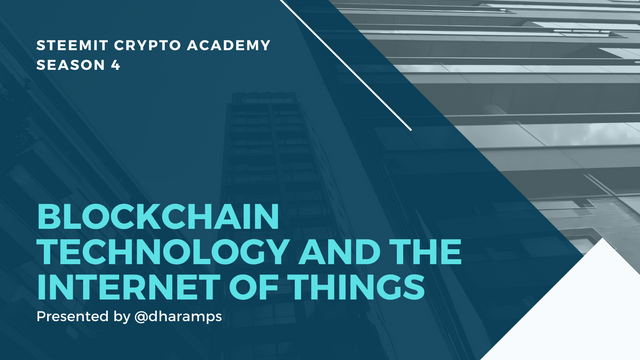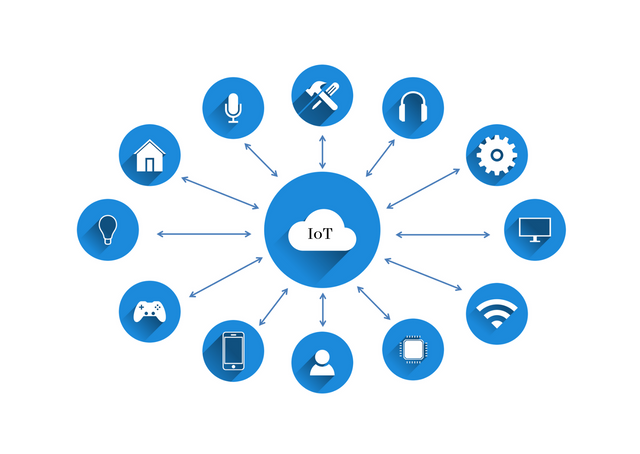

Explain why the future of the Internet of Things depends on the Blockchain.
The possibility of IoT was first introduced by Kevin Ashton in 1999. IoT, the shortening, represents the Internet of Things. IoT is an organization or network of physical devices or actual gadgets and other installed objects that share information with hardware, programming, actuators over network availability. In straightforward terms, it behaves like a host that divides information among devices that are utilized day by day.
Using this network availability, a free flow or progression of data can be collected and simultaneously, it can exchange that data. It can also be defined as a smart way of connecting people, processes, and data exchange. IoT is also known as device-to-device communication.
Furthermore, The WSN (Wireless Sensor Network) is viewed as the establishment of the IoT applications. The Zigbee protocol is vital for IoT implementation as it is known for its low power consumption. It maintained IEEE 802.15.4 standards during utilization. IoT has the ability to access and receive information on any device at any time and from anywhere.

Applications of Internet of Things
(1) Wearable Health Devices - One hot area of the IoT is wearable health devices. For instance, some pulse rate and fitness monitors assist individuals with the following track of their workouts and assess their physical condition & State of being.
(2) Location-Based Services - The Internet of Things can also offer numerous helpful types of assistance and applications that are location-based.
- Tracking Children
- Eldercare
- Location-Based Marketing
(3) Home Automation - In Today's era, Smart gadgets associated with the IoT empower you to monitor and connect with your home intently. For instance, some LED-based lighting frameworks can turn themselves off when nobody's in the room.
More about of the Internet of Things
(1) The significant parts that exist in the Internet of things are as per the following :
- Hardware
- Software
- Verbal exchange infrastructure
(2) The elements/components of the Internet of Things are :
- People
- Process
- Things
- Data

The integration of IoT and Blockchain Technology: The future of the Internet of Things depends on the Blockchain?
The fact is, the future of the Internet of Things depends on Blockchain. Is it actual? So many humans may additionally have many solutions behind this fact. However, in reality, it's miles real that the Internet of Things is absolutely dependent on Blockchain. To some extent, IoT with Blockchain Technology may be considered as a part of human lifestyles.
As we understand, the Internet of Things facilitates people to enhance their lives and live higher and get whole control over their lives. The Internet of Things also can offer numerous helpful types of assistance and programs to humans. But it additionally has a few drawbacks, such as security, scalability, compatibility, etc.
Moreover, Blockchain technology, a Distributed Ledger Technology, has a decentralized nature. After the genesis block, all subsequent blocks or nodes are interconnected, where transactions and data are stored within a network, secured by CryptoGraphy algorithms. Blockchain Technology has gained a lot of attention & interest due to being the first-class security in the Crypto arena.
Whereas The Internet of Things has a centralized nature, that's where it lacks security. As the number of linked devices increases, more information will be shared between devices, where hackers are more likely to break into the network.
.jpeg)
The integration of IoT and Blockchain Technology can rectify these flaws. Fundamentally, the integration of IoT and blockchain makes way for new freedoms, increases security, and further develops & improves transparency at the hour of exchanges for every involved party. Hence, This makes the Internet of Things dependent on the Blockchain.
For instance,
Enhanced security: As I stated earlier, The Internet of Things has a centralized nature, lacking statistics security. As the number of linked devices increases, Devices will share more information, where hackers are more likely to interrupt the network. They can manipulate our data, which ends up like corruption. Which eliminates transparency and trust between the involved parties.
But, With the integration of IoT with Blockchain Technology, It secures the data/information using CryptoGraphy Hash System and algorithm, which no one can alter. It can be revealed to only the receiver, to whom the information is intended, who can read and process it. At the same time, it improves transparency at the time of transactions for all involved parties.

Q. Research and create content on the following IoT Blockchain use case.
Filament
The filament is a technology company. It is situated in Reno. With the growing reputation of IoTs, the dangers of privacy are growing, and many brands are moving into this field. Filament has discovered an approach to make those issues proper. This can only become about through integrating the blockchain generation with IoT. Now Filament is the main employer in this region, and their progress is quite impressive.

The filament has collaborated with many giant companies to provide a better and safer experience in all sectors such as information and technology and the energy sector.
Now some major projects of filament to solve many existing problems are given below:-
Nowadays, many massive companies, which include Tesla, has built so driverless cars; however, the hassle with the ones is that the one's car run of code which Code might save in the automobile itself, and each person with excessive know-how can use the one's code to misuse the one's vehicles against you or all of us. We have witnessed such incidents within the beyond. To deal with this, the filament has provided you with driverless automobiles so that you can be safer in all fields than the ones of Tesla.
Numerous industries have been constructed while IoTs turned into a complete swing; however, the privacy concerns have been no longer much. But now, the integration of blockchain can solve those troubles. So to make the industrial devices like-minded with this integration, the filament has developed a blocklet chip that may make these devices well suited with this.
The essential trouble with current IoTs is that those aren't well compatible with many devices because of the distinctive popularity used to fabricate those devices. To solve this, the filament has set some standards to be used by the ones IoTs to use Ethereum blockchain to run. This will resolve these compatibility problems.

Thank You
Hi @dharamps
Thanks for participating in the Steemit Crypto Academy
Feedback
This is good content. Well done with your research study on the Integration of Blockchain and IoT.
Total| 8/10
Downvoting a post can decrease pending rewards and make it less visible. Common reasons:
Submit
Thank You prof.
Downvoting a post can decrease pending rewards and make it less visible. Common reasons:
Submit
You have been upvoted by @sapwood, a Country Representative from INDIA. We are voting with the Steemit Community Curator @steemcurator07 account to support the newcomers coming into Steemit.
Engagement is essential to foster a sense of community. Therefore we would request our members to visit each other's posts and make insightful comments.
Thank you
Downvoting a post can decrease pending rewards and make it less visible. Common reasons:
Submit
Thank You
Downvoting a post can decrease pending rewards and make it less visible. Common reasons:
Submit